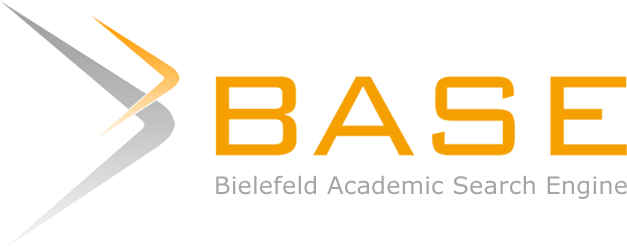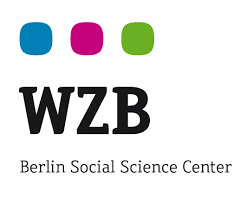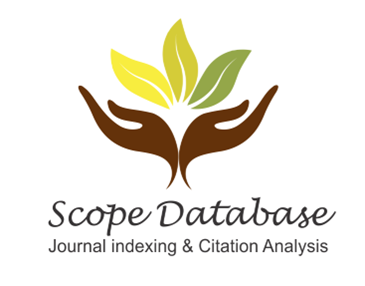ANÁLISIS DIGITAL DEL TAMAÑO DE LOS DIENTES ENTRE INDIVIDUOS CON DIFERENTES MALOCLUSIONES: UN ESTUDIO CON MODELOS DENTALES DIGITALES TRIDIMENSIONALES
DOI:
https://doi.org/10.47820/recisatec.v4i1.333Palabras clave:
análisis digital, maloclusiones, tamaño de los dientes.Resumen
El objetivo del estudio fue examinar los tamaños de los dientes, en modelos digitales de pacientes con diferentes maloclusiones, con la ayuda de un software de medición tridimensional. Se analizaron 68 modelos digitales de 34 pacientes con edades comprendidas entre los 21 y los 29 años. Se realizó una revisión para determinar los participantes según la clasificación de Angle, quedando 24 pacientes en el grupo de clase I y 10 pacientes en el grupo de clase II. A continuación, se escanearon los modelos de yeso de los pacientes, utilizando el escáner digital Dentsply Sirona Cerec Omnicam Software 5.2, obteniendo así su formato digital. A continuación, se utilizó el software NemoStudio-2022 para realizar mediciones del tamaño de los dientes. Después del análisis de las mediciones, se observó que los tamaños mesiodistal anterior y general no se relacionaron estadísticamente con las diferentes maloclusiones. Tampoco hubo diferencia entre los grupos en cuanto a los valores de la proporción anterior, ni a la hora de evaluar los valores de la proporción general entre los grupos. Finalmente, ningún grupo de maloclusión tuvo una relación significativa con la alteración del tamaño mesiodistal anterior o general. La diferencia en el tamaño de los dientes mesiodistales de los dientes antero-superiores y antero-inferiores no contribuye a la aparición de maloclusiones Angle Clase I, Clase II y Clase III, ya que no hubo relaciones estadísticamente significativas al respecto.
Descargas
Citas
Batista KB, Thiruvenkatachari B, Harrison JE, O'Brien KD. Orthodontic treatment for prominent upper front teeth (Class II malocclusion) in children and adolescents. Cochrane Database Syst Rev 2018 Mar 13;3(3):CD003452. DOI: https://doi.org/10.1002/14651858.CD003452.pub4
Bernardi S, Angelone AM, Macchiarelli G. Anatomy in dentistry: From the beginnings to contemporary reality. Clin Anat. 2022 Sep;35(6):711-722. doi: 10.1002/ca.23869. Epub 2022 Apr 9. PMID: 35368109. DOI: https://doi.org/10.1002/ca.23869
Black GV. Descriptive anatomy of the human teeth. Philadelphia: S.S. White Manufacturing Company, 1897.http://resource.nlm.nih.gov/67610310R
Jabri MA, Wu S, Zhang Y, Ma J, Wang L. A Review on Comparison of Tooth Size Discrepancies among Angle's Class I, II, and III Malocclusion: Is There a Significance? J Contemp Dent Pract. 2019 Aug 1;20(8):994-999. PMID: 31797860. DOI: https://doi.org/10.5005/jp-journals-10024-2615
Karadede Ünal B, Dellaloğlu D. Digital analysis of tooth sizes among individuals with different malocclusions: A study using three-dimensional digital dental models. Sci Prog. 2021 Jul-Sep;104(3):368504211038186. doi: 10.1177/00368504211038186. PMID: 34490798; PMCID: PMC10367186. DOI: https://doi.org/10.1177/00368504211038186
Dindaroğlu F, Duran GS, Aras I. Three-dimensional evaluation of morphologic tooth symmetry in various malocclusions. Am J Orthod Dentofacial Orthop. 2016 Sep;150(3):459-66. doi: 10.1016/j.ajodo.2016.04.017. PMID: 27585774. DOI: https://doi.org/10.1016/j.ajodo.2016.04.017
Rakhshan V, Ghorbanyjavadpour F, Ashoori N. Buccolingual and Mesiodistal Dimensions of the Permanent Teeth, Their Diagnostic Value for Sex Identification, and Bolton Indices. Biomed Res Int. 2022 Feb 10;2022:8381436. doi: 10.1155/2022/8381436. PMID: 35187172; PMCID: PMC8853791.
Mollabashi V, Soltani MK, Moslemian N, Akhlaghian M, Akbarzadeh M, Samavat H, Abolvardi M. Comparison of Bolton ratio in normal occlusion and different malocclusion groups in Iranian population. Int Orthodox. 2019 Mar;17(1):143-150. doi: 10.1016/j.ortho.2019.01.005. Epub 2019 Feb 13. PMID: 30770330.
Alsaigh H, Alrashdi M. Morphometric analysis of tooth morphology among different malocclusion groups in a Hispanic population. BMC Oral Health. 2023 Apr 3;23(1):199. doi:10.1186/s12903-023-02882-7. PMID: 37013534; PMCID: PMC10071771. DOI: https://doi.org/10.1186/s12903-023-02882-7
Hussein FA, Mohamed RE, El-Awady AA, Ali MM, Al-Khalifa HN, Abdallah KF, Abouelnour AM. Digital evaluation of Bolton's tooth size discrepancies among different malocclusions categories of Egyptian adolescent orthodontic population: A retrospective study. Int Orthodox. 2022 Sep;20(3):100660. doi: 10.1016/j.ortho.2022.100660. Epub 2022 Jun 21. PMID: 35739004. DOI: https://doi.org/10.1016/j.ortho.2022.100660
Alsaigh H, Alrashdi M. Geometric analysis of tooth size among different malocclusion groups in a Hispanic population. Am J Orthod Dentofacial Orthop. 2023 Nov;164(5):646-656. doi: 10.1016/j.ajodo.2023.03.022. Epub 2023 Jun 3. PMID: 37278676. DOI: https://doi.org/10.1016/j.ajodo.2023.03.022
Smith SS, Buschang PH, Watanabe E. Interarch tooth size relationships of 3 populations: "does Bolton's analysis apply?". Am J Orthod Dentofacial Orthop. 2000 Feb;117(2):169-74. doi: 10.1016/s0889-5406(00)70228-9. PMID: 10672217. DOI: https://doi.org/10.1016/S0889-5406(00)70228-9
Arya BS, Savara BS, Thomas D, Clarkson Q. Relation of sex and occlusion to mesiodistal tooth size. Am J Orthodox. 1974 Nov;66(5):479-86. doi: 10.1016/0002-9416(74)90109-2. PMID: 4621246. DOI: https://doi.org/10.1016/0002-9416(74)90109-2
Basaran G, Selek M, Hamamci O, Akkuş Z. Intermaxillary Bolton tooth size discrepancies among different malocclusion groups. Angle Orthodox. 2006 Jan;76(1):26-30. doi: 10.1043/0003-3219(2006)076[0026:IBTSDA]2.0.CO;2. PMID: 16448265.
Akyalçin S, Doğan S, Dinçer B, Erdinc AM, Oncağ G. Bolton tooth size discrepancies in skeletal Class I individuals presenting with different dental angle classifications. Angle Orthodox. 2006 Jul;76(4):637-43. doi: 10.1043/0003-3219(2006)076[0637:BTSDIS]2.0.CO;2. PMID: 16808571.
Mullen SR, Martin CA, Ngan P, Gladwin M. Accuracy of spatial analysis with emodels and plaster models. Am J Orthod Dentofacial Orthop. 2007 Sep;132(3):346-52. doi: 10.1016/j.ajodo.2005.08.044. PMID: 17826603. DOI: https://doi.org/10.1016/j.ajodo.2005.08.044
Al-Khateeb SN, Abu Alhaija ES. Tooth size discrepancies and arch parameters among different malocclusions in a Jordanian sample. Angle Orthodox. 2006 May;76(3):459-65. doi: 10.1043/0003-3219(2006)076[0459:TSDAAP]2.0.CO;2. PMID: 16637727.
Wedrychowska-Szulc B, Janiszewska-Olszowska J, Stepień P. Overall and anterior Bolton ratio in Class I, II, and III orthodontic patients. Eur J Orthodox. 2010 Jun;32(3):313-8. doi: 10.1093/ejo/cjp114. Epub 2009 Dec 16. PMID: 20018795. DOI: https://doi.org/10.1093/ejo/cjp114
Lombardo L, Setti S, Molinari C, Siciliani G. Intra-arch widths: a meta-analysis. Int Orthodox. 2013 Jun;11(2):177-92. English, French. doi: 10.1016/j.ortho.2013.02.005. Epub 2013 Apr 2. PMID: 23558045. DOI: https://doi.org/10.1016/j.ortho.2013.02.005
Ocak I, Karsli N, Altug AT, Aksu M. Relationship between vertical facial morphology and dental arch measurements in class II malocclusion: a retrospective study. PeerJ. 2023 Sep 5;11:e16031. doi: 10.7717/peerj.16031. PMID: 37692120; PMCID: PMC10487581. DOI: https://doi.org/10.7717/peerj.16031
Kaur, Avninder, et al. "Evaluation and applicability of Moyers mixed dentition arch analysis in Himachal population." Dental Journal of Advance Studies 2.02 (2014): 096-104. DOI: https://doi.org/10.1055/s-0038-1671993
Janson GR, Metaxas A, Woodside DG, de Freitas MR, Pinzan A. Three-dimensional evaluation of skeletal and dental asymmetries in Class II subdivision malocclusions. Am J Orthod Dentofacial Orthop. 2001 Apr;119(4):406-18. doi: 10.1067/mod.2001.113267. PMID: 11298314. DOI: https://doi.org/10.1067/mod.2001.113267
Oktay H, Ulukaya E. Intermaxillary tooth size discrepancies among different malocclusion groups. Eur J Orthodox. 2010 Jun;32(3):307-12. doi: 10.1093/ejo/cjp079. Epub 2009 Sep 3. PMID: 19729399. DOI: https://doi.org/10.1093/ejo/cjp079
Tomassetti JJ, Taloumis LJ, Denny JM, Fischer JR Jr. A comparison of 3 computerized Bolton tooth-size analyzes with a commonly used method. Angle Orthodox. 2001 Oct;71(5):351-7. doi: 10.1043/0003-3219(2001)071<0351:ACOCBT>2.0.CO;2. PMID: 11605868.
Sousa MV, Vasconcelos EC, Janson G, Garib D, Pinzan A. Accuracy and reproducibility of 3-dimensional digital model measurements. Am J Orthod Dentofacial Orthop. 2012 Aug;142(2):269-73. doi: 10.1016/j.ajodo.2011.12.028. PMID: 22858338. DOI: https://doi.org/10.1016/j.ajodo.2011.12.028
White AJ, Fallis DW, Vandewalle KS. Analysis of intra-arch and interarch measurements from digital models with 2 impression materials and a modeling process based on cone-beam computed tomography. Am J Orthod Dentofacial Orthop. 2010 Apr;137(4):456.e1-9; discussion 456-7. doi: 10.1016/j.ajodo.2009.09.019. PMID: 20362900. DOI: https://doi.org/10.1016/j.ajodo.2009.09.019
De Luca Canto G, Pachêco-Pereira C, Lagravere MO, Flores-Mir C, Major PW. Intra-arch dimensional measurement validity of laser-scanned digital dental models compared with the original plaster models: a systematic review. Orthod Craniofac Res. 2015 May;18(2):65-76. doi: 10.1111/ocr.12068. Epub 2015 Feb 11. PMID: 25677755. DOI: https://doi.org/10.1111/ocr.12068
Grünheid T, McCarthy SD, Larson BE. Clinical use of a direct chairside oral scanner: an assessment of accuracy, time, and patient acceptance. Am J Orthod Dentofacial Orthop. 2014 Nov;146(5):673-82. doi: 10.1016/j.ajodo.2014.07.023. Epub 2014 Oct 28. PMID: 25439218. DOI: https://doi.org/10.1016/j.ajodo.2014.07.023
Paulino V, Paredes V, Cibrian R, Gandia JL. Tooth size changes with age in a Spanish population: percentile tables. Med Oral Pathol Oral Cir Bucal. 2011 Sep 1;16(6):e840-4. doi: 10.4317/medoral.17093. PMID: 21196845. DOI: https://doi.org/10.4317/medoral.17093
Lundstrom A. Intermaxillary tooth width ratio and tooth alignment and occlusion. Acta Odontol Scand. 1955 Feb;12(3-4):265-92. doi: 10.3109/00016355509028167. PMID: 14375894. DOI: https://doi.org/10.3109/00016355509028167
Mishra RK, Kafle D, Gupta R. Analysis of Interarch Tooth Size Relationship in Nepalese Subjects with Normal Occlusion and Malocclusions. Int J Dent. 2019 Nov 18;2019:2761427. doi: 10.1155/2019/2761427. PMID: 31827516; PMCID: PMC6885765. DOI: https://doi.org/10.1155/2019/2761427
Mollabashi V, Soltani MK, Moslemian N, Akhlaghian M, Akbarzadeh M, Samavat H, Abolvardi M. Comparison of Bolton ratio in normal occlusion and different malocclusion groups in Iranian population. Int Orthodox. 2019 Mar;17(1):143-150. doi: 10.1016/j.ortho.2019.01.005. Epub 2019 Feb 13. PMID: 30770330. DOI: https://doi.org/10.1016/j.ortho.2019.01.005
Rakhshan V, Ghorbanyjavadpour F, Ashoori N. Buccolingual and Mesiodistal Dimensions of the Permanent Teeth, Their Diagnostic Value for Sex Identification, and Bolton Indices. Biomed Res Int. 2022 Feb 10;2022:8381436. doi: 10.1155/2022/8381436. PMID: 35187172; PMCID: PMC8853791. DOI: https://doi.org/10.1155/2022/8381436
Tian Y, Chen C, Xu X, Wang J, Hou X, Li K, Lu X, Shi H, Lee ES, Jiang HB. A Review of 3D Printing in Dentistry: Technologies, Affecting Factors, and Applications. Scanning. 2021 Jul 17;2021:9950131. doi: 10.1155/2021/9950131. PMID: 34367410; PMCID: PMC8313360. DOI: https://doi.org/10.1155/2021/9950131
Descargas
Publicado
Cómo citar
Número
Sección
Categorías
Licencia
Derechos de autor 2024 RECISATEC - REVISTA CIENTÍFICA SALUD Y TECNOLOGÍA

Esta obra está bajo una licencia internacional Creative Commons Atribución 4.0.
Os direitos autorais dos artigos/resenhas/TCCs publicados pertecem à revista RECISATEC, e seguem o padrão Creative Commons (CC BY 4.0), permitindo a cópia ou reprodução, desde que cite a fonte e respeite os direitos dos autores e contenham menção aos mesmos nos créditos. Toda e qualquer obra publicada na revista, seu conteúdo é de responsabilidade dos autores, cabendo a RECISATEC apenas ser o veículo de divulgação, seguindo os padrões nacionais e internacionais de publicação.





















































